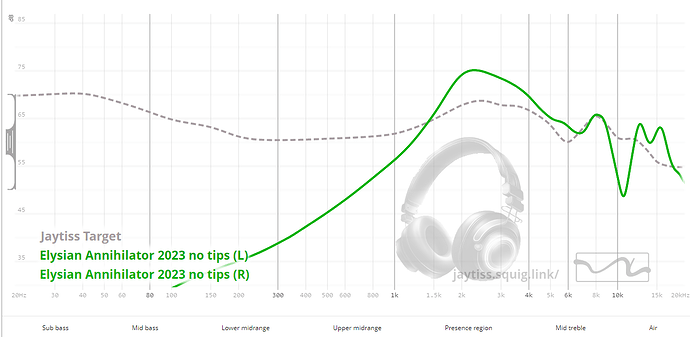You’re right, however, there isn’t much we can do about it now unfortunately lol @VIVIDICI_111 you heard the man, time to start doing foam and silicone measurements!
it is not really a good idea to compare stuff 1:1 with multiple databases. And redoing it all with silicone instead would be way too much work/impossible for them probably.
Oh baby yes ![]()
I don’t compare 1:1 as coupler differences exist. And I should clarify, I’m not asking for a redo, just future ones. Redoing would be hell on earth lol
I just wanted to be able to loosely compare the treble characteristics of other measured units, that was the reason behind the request.
Nice to see Timmy hanging round here, what up fellow Code Geass enjoyer
Wow ![]() words from a legend. It’s awesome to see the database getting traction and being crossed referenced with vets of the hobby. @VIVIDICI_111 took over the database from me as it was getting to be a bit to time consuming with changes occurring in my personal life. Mainly due to the amazing gentleman in our tour group sending all kinds of IEMs my way to demo and measuring I just couldn’t keep up.
words from a legend. It’s awesome to see the database getting traction and being crossed referenced with vets of the hobby. @VIVIDICI_111 took over the database from me as it was getting to be a bit to time consuming with changes occurring in my personal life. Mainly due to the amazing gentleman in our tour group sending all kinds of IEMs my way to demo and measuring I just couldn’t keep up.
As @domq422 I was new to measuring and also still somewhat fresh in the hobby. The foam seemed easier to get a good seal and always ensure the same insertion depth. Coupler, foams used and the cable never changed. Had no idea how drastically treble could change. It makes sense though because I reached out to a member on discord about getting the database 5128 compliant and they were unable to due to using the foam tips.
Hey at least there’s some consistency within the inconsistency. As others have said, the variance in 711 couplers would likely lead to inaccurate comparisons amongst databases (not even including differing measuring methodologies).
Also silicon, wide bore or narrow bore? Thick silicon or PTFE? Opaque or clear silicon? The list goes on ahahaha.
Thanks for your contributions though!
tbf, silione tip differences arent as major as with foam vs silicone…
Code Geass is the best
Thanks for dropping by man! Yeah, being able to compensate with 5128 in the future would be a benefit to the fans as they can compare more directly with other squigs. And it’s not too late I believe, just need to re-measure the popular IEMs with silicone and make sure future ones are measured with silicone.
Of course not - and I was never insinuating so. I’m getting at how many variables there are and how comparability is a pipe dream anyways.
Unit variance likely overshadows any attempt at consistency one may try and establish.
The point of making databases comparable to each other with 5128 is, among many other reasons, to detect major unit variations. Otherwise it’s not as easy to catch.
Cool project! This could go a long way in terms of making graphs more useful for decision making
Chifi QC…truly a work in progress
Sorry but can I ask why you think that the b&k5128 allows for cross comparison between rigs?
It’s not the 5128 measurement rig that I’m referring to. I was talking about the 5128 Delta Project that Griffin (aka. Listener) from HeadphoneShow did.
Basically he calculated the coupler differences of each database, and created compensation for each that, when use, allows for comparisons across rigs.
Any database that has this compensation will have the “5128 Delta” on their squig site. You can see in the right corner of where you find all the targets.
Thanks - Do you have a reference to the 5128 EQ work as I was under the impression this “use of comparables” was based on the 5128 coupler and using DFHRTF.
I will admit my knowledge of the inner workings of this project is minimal at best. I just know how to use the end product. However, if you want to learn more about how this came to be, you can click on the yellow question mark on my Squig site.

You’ll find all the information on this project there ![]()
Thanks a lot ![]()

